- Title: On the Density of Neutral Hydrogen in Intergalactic Space
- Authors: James Gunn and Bruce Peterson
- First Author’s Institution: California Institute of Technology
- Year Published: 1965
This is the first in a series of three posts by Harvard graduate student Yuan-Sen Ting. For more information and interactive demonstrations of the concepts discussed here, see the interactive online software module he developed for the Harvard AY201b course.
Yuan-Sen is a first-year graduate student in astronomy at Harvard University. He is working with Dr Alexey Vikhlinin and Prof. Christopher Stubbs to study the evolution of the Universe by looking at the relative separations in distance between clusters of galaxies using the Chandra X-Ray Observatory.
Introduction
Although this seminal paper by Gunn & Peterson (1965) comprises only four pages, the authors suggested three ideas that are still being actively researched by astronomers today, namely
In this series of astrophysical classics, we will give a brief overview on these topics, the initial discussion in Gunn & Peterson (1965) and the current thinking on these topics.
Lyman alpha forest
Gunn and Peterson propose using Lyα absorption in the distant quasar spectrum to study the neutral hydrogen in the intergalactic medium (IGM). The quasar acts as the light source, like shining a flashlight across the Universe. Intervening neutral hydrogen clouds, along the line of sight to the quasar, cause absorptions at the neutral hydrogen transition wavelengths. Because the characteristic quasar spectrum is well-understood, it’s relatively easy to isolate and study this absorption.
In our expanding Universe, the spectrum is continuously redshifted. Therefore the intervening neutral hydrogen at different distances will produce Lyα absorption at many different wavelengths. After all these absorptions, the quasar spectrum will have a “forest” of lines (see figure below), hence the name Lyα forest.

Animation showing a quasar spectrum being continuously redshifted due to cosmic expansion, with various Lyman absorbers acting at different redshifts. From the interactive module.
For a quasar very far away from us, along the line of sight, we are sampling a significant fraction of the Universe’s history. Therefore, by studying the Lyα forests, we are essentially reconstructing the history of structure formation.
There are two types of Lyα absorbers:
- Low column density absorbers: These absorbers are believed to be the filamentary neutral hydrogen distributed in the web of dark matter. In this cosmic web, the dark matter filaments are sufficiently shallow to avoid gravitational collapse of the gas but deep enough to prevent these clouds of the inter- and proto-galactic medium from dispersing.
- High column density absorbers: these are mainly due to intervening galaxies. As opposed to the low column density absorbers, since galaxies are generally more metal rich than the filamentary gas; the absorption of Lyα due to these system will usually be accompanied by metal absorption lines.
Since our discussion here focuses on the IGM, for the rest of the discussion in this series, we will only discuss the former.
Low column density absorbers
So, what can we learn about neutral hydrogen in the Universe by looking at Lyα forests? With a large sample of quasar spectra, we can bin up absorption lines due to intervening clouds of the same distance. This allows us to study the properties of gas at that distance (at that time in the Universe’s history), and learn about the evolution of the IGM.
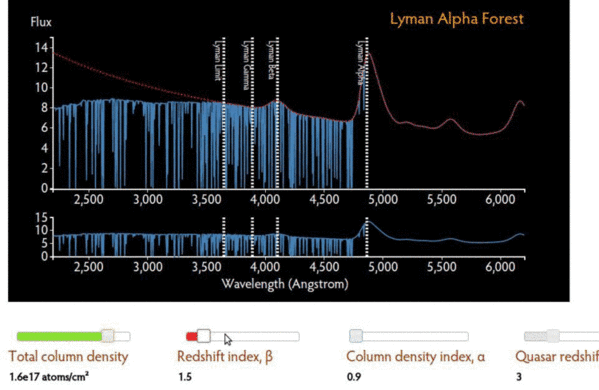
Animation illustrating the effect of the redshift index on the quasar absorption spectrum. A higher index means more closely spaced absorption near the emission peak. From the interactive module.
It turns out that the properties of the IGM can be rather well described by power laws. If we define n(z) as the number density of clouds as a function of redshift (z), and N(ρ) as the number density of the clouds as a function of column density (ρ), it has been observed that,
But we can learn about more than just gas density. Research suggests that the neutral hydrogen gas in the Lyα clouds is in photoionization equilibrium. In other words, the photoionization (i.e. heating) due to the photons is balanced by cooling processes. Photoionization equilibrium allows us to calculate how many photons have to be produced, either from galaxies or quasars, in order to maintain the gas at the observed temperature. Based on this number of photons, we can deduce how many stars were formed at each epoch in the history of the Universe.
We’ve been relying on the assumption that these absorbers are intergalactic gas clouds. How can we be sure they’re not actually just outflows of gas from galaxies? This question has been tackled by studying the clustering of the absorbers. Since galaxies are highly clustered, if the absorbers are related to the outflow of galaxies, one should expect clustering of these absorption signals. The studies of Lyα forest suggest that the absorbers are not clustered as strongly as galaxies, favoring the interpretation that they are filamentary structures of intergalactic gas.
However this discussion is only valid in the relatively recent Universe. When we look further, and therefore study the earliest times, there are less photons and correspondingly more neutral hydrogen atoms. With more and more absorption, eventually the lines in the forest become so compact and deep that the “forest” becomes a “trough”. This will be the main discussion in our next post.

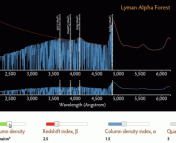
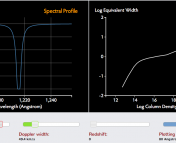
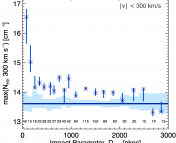
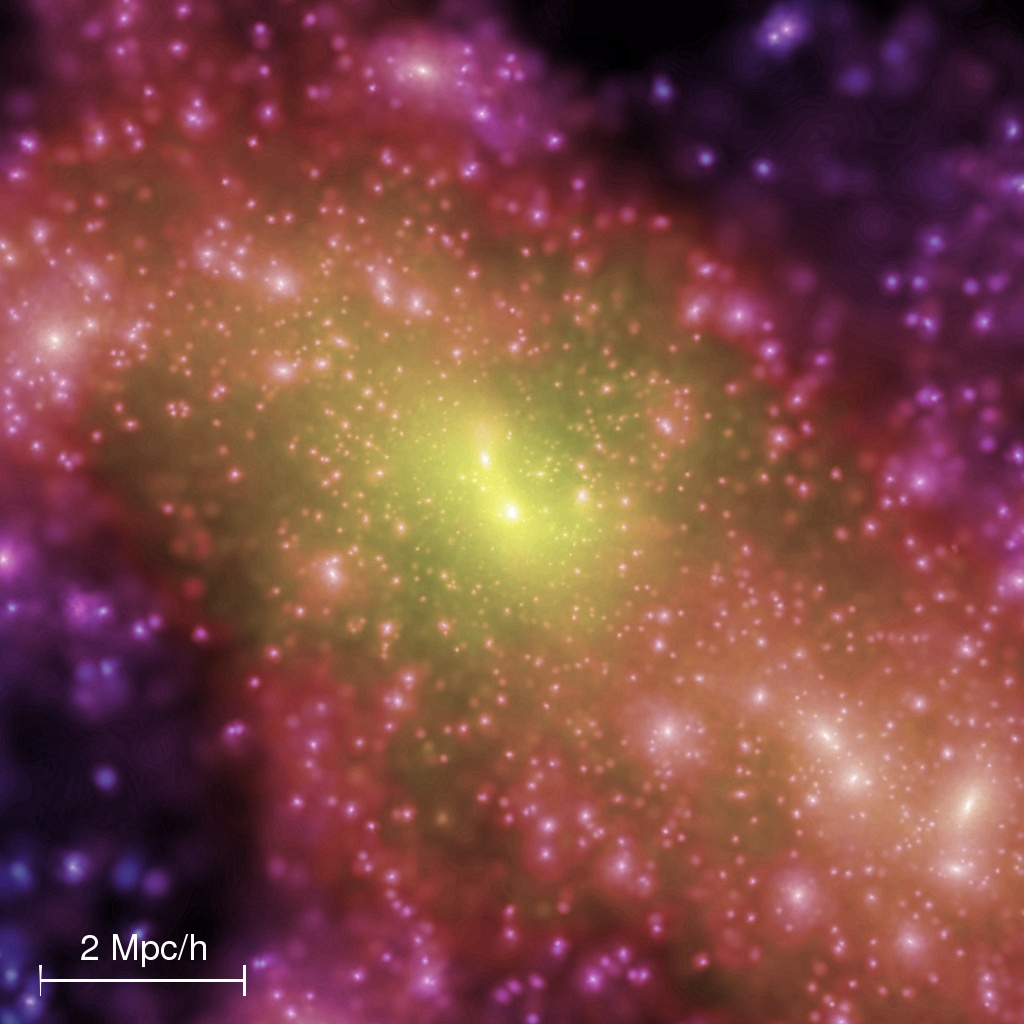
Trackbacks/Pingbacks